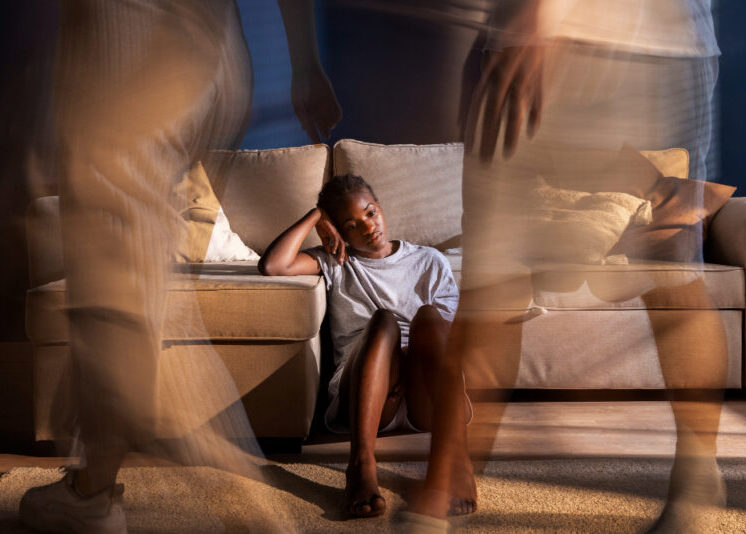Protecting Our Children: Preventing Child Abuse

Child abuse is an insidious and heart-wrenching issue that continues to cast a dark shadow over society. It’s a problem that knows no boundaries, affecting children from all walks of life. In this blog post, we delve into the critical topic of child abuse, aiming to provide a comprehensive guide on understanding and preventing it. Our mission is to equip you with the knowledge and tools needed to protect the most vulnerable members of our community: our children.
What is Child Abuse?
Child abuse takes various forms—physical, emotional, sexual, and neglect. It’s alarmingly prevalent and leaves lasting scars on children.
Child abuse is a distressing reality that affects countless children worldwide. It encompasses various forms, including physical, emotional, sexual, and neglect. The statistics are alarming, but what’s more devastating is the long-lasting impact it has on a child’s physical and emotional well-being. Understanding the different forms of child abuse is the first step towards preventing it.
Recognizing the Signs
Recognizing the signs of child abuse is critical because it’s often concealed behind closed doors. Learn to identify signs and symptoms that may suggest child abuse. Open communication with children is key to uncovering problems. Below are some signs to take note of:
- Physical Signs:
– Unexplained bruises, welts, burns, or injuries on the child, especially in unusual locations.
– Frequent injuries or injuries in different stages of healing.
– Bite marks, fractures, or broken bones.
– Untreated medical conditions or failure to thrive.
- Behavioural Signs:
– Sudden changes in behaviour, mood, or personality.
– Withdrawal from friends, family, or usual activities.
– Fear of going home or being with a specific person.
– Regressive behaviour (e.g., bedwetting, thumb-sucking) in older children.
– Excessive aggression, anger, or violent behaviour.
– Depression, anxiety, or signs of severe emotional distress.
– Suicidal thoughts or self-harming behaviours.
- Emotional Signs:
– Low self-esteem or excessive self-blame.
– Extreme fear or anxiety, especially when around a specific person.
– Avoidance of eye contact or difficulty trusting others.
– Emotional outbursts, mood swings, or excessive fearfulness.
- Sexual Signs:
– Knowledge of sexual acts inappropriate for their age.
– Sexualized play or drawings that are developmentally inappropriate.
– Fear of or discomfort with specific individuals, especially adults.
– Sexually transmitted infections (STIs) in a child.
- Neglect Signs:
– Poor hygiene, consistently dirty or unkempt appearance.
– Malnutrition, dehydration, or unexplained weight loss.
– Lack of appropriate clothing or inadequate shelter.
– Chronic absenteeism from school or consistently late for school.
– Frequent health issues left untreated.
- Verbal Clues:
– Disclosure by the child, either directly or indirectly, about being abused.
– Statements that imply fear, threats, or harm from a specific person.
– Expressing that they are being kept a secret or told not to talk about something.
- Parent or Caregiver Behavior:
– A history of violence or abuse in the household.
– Substance abuse or domestic violence within the home.
– A caregiver who appears overly controlling, distant, or indifferent toward the child.
– Frequent changes in caregivers or schools without a valid reason.
- Peer Observations:
– Friends, teachers, or classmates noticing and reporting unusual behavior or injuries in the child.
- Environmental Clues:
– Evidence of drug paraphernalia or unsafe living conditions in the child’s home.
- Intuition: Trust your gut feeling. If something doesn’t seem right or you suspect abuse, it’s better to report your concerns and let professionals investigate.
Encourage kids to express their feelings, thoughts, and concerns without fear of judgment. By creating a safe space for dialogue, you can help children open up about their experiences.
The Role of Caregivers and Communities
Parents, caregivers, and teachers play vital roles in prevention. Create a safe environment, build trust, and maintain open lines of communication.
Parents, caregivers, and teachers hold the power to prevent child abuse. Ensure that children grow up in a safe and nurturing environment. Build trust by being supportive and empathetic. Maintain open lines of communication, so children feel comfortable discussing their problems and concerns with you.
Reporting Child Abuse
It’s not just a moral obligation; it’s a legal one. Report suspected abuse promptly to the appropriate authorities.
Reporting child abuse is not just a moral duty; it’s a legal obligation. If you suspect a child is in danger, you must report it to the relevant authorities immediately. Your actions could save a child’s life and prevent further suffering.
Preventive Measures
Prevent child abuse through education and awareness. Seek help from organizations and resources that support this cause.
Preventing child abuse requires collective efforts. Educate yourself and others about child abuse and its prevention. Support organizations and resources dedicated to this cause. Join or initiate awareness campaigns to spread the word and encourage others to get involved. By working together, we can create a safer world for our children, free from the scourge of child abuse.
Conclusively, Protecting our children from abuse is a collective responsibility. By understanding the signs, promoting open communication, and reporting suspected abuse, we can create a safer environment for our children. Share this information with others and join the efforts to ensure that every child grows up in a safe and nurturing environment, free from the scourge of child abuse.
To make a difference, share this blog post on your social media platforms and encourage your friends and family to do the same. Together, we can raise awareness and take action to protect our children.